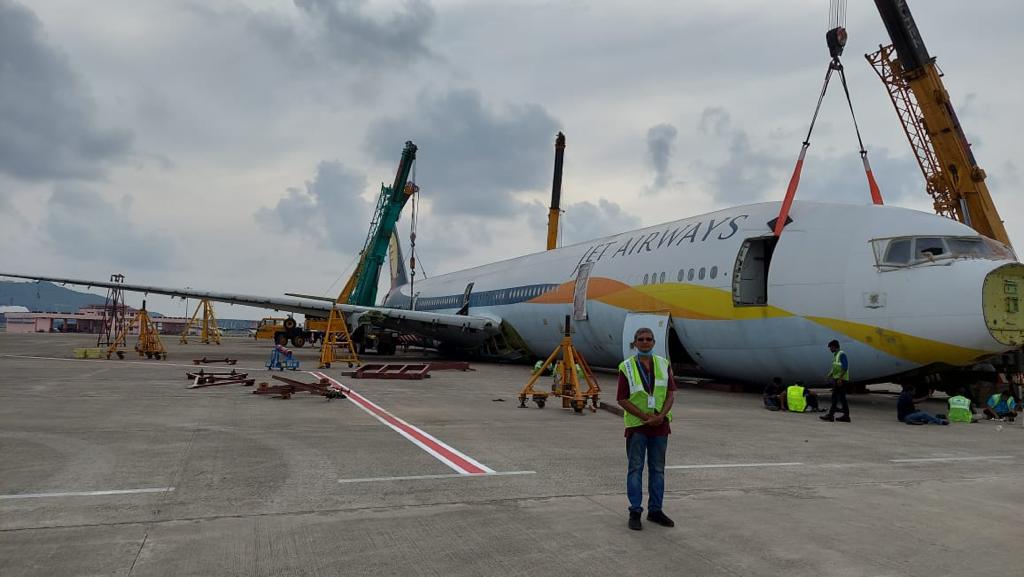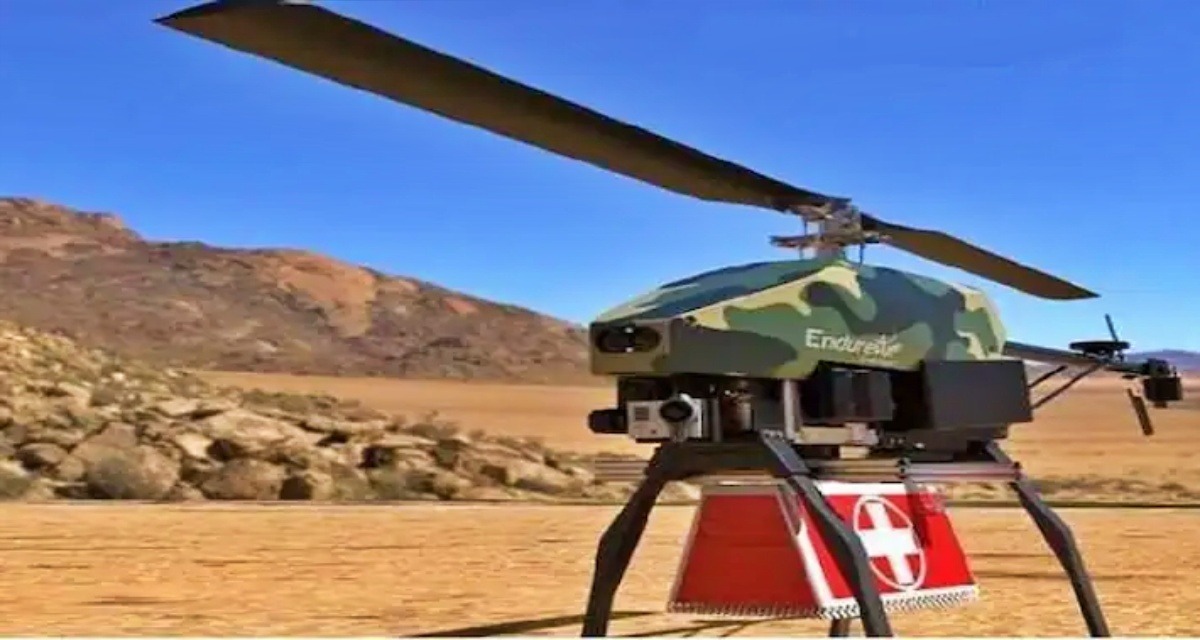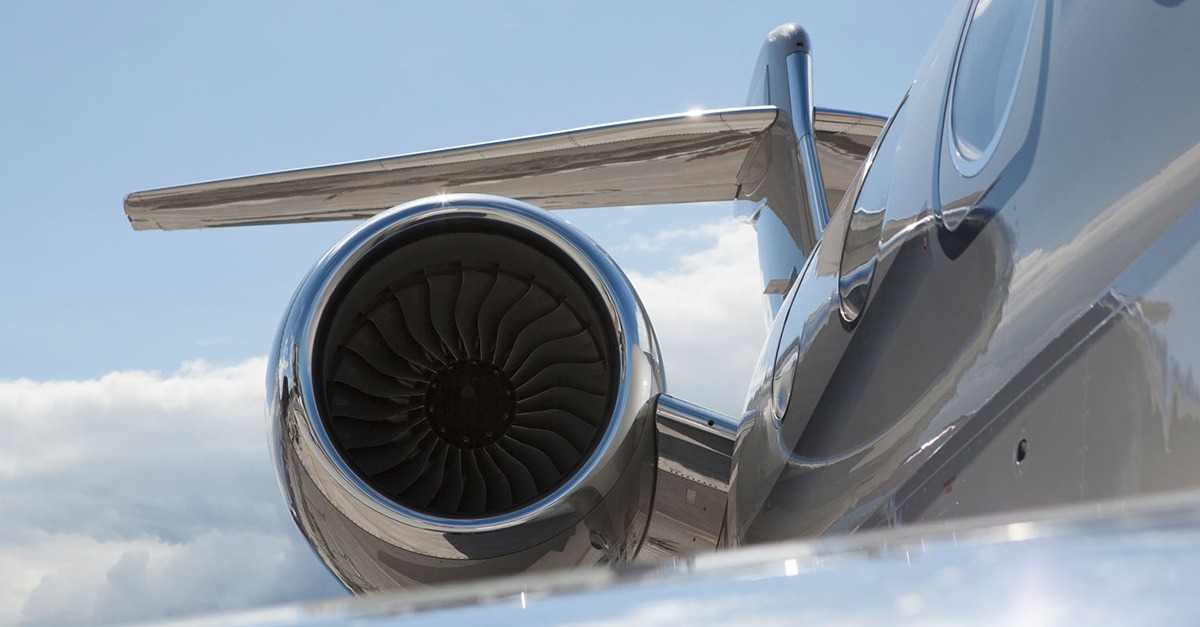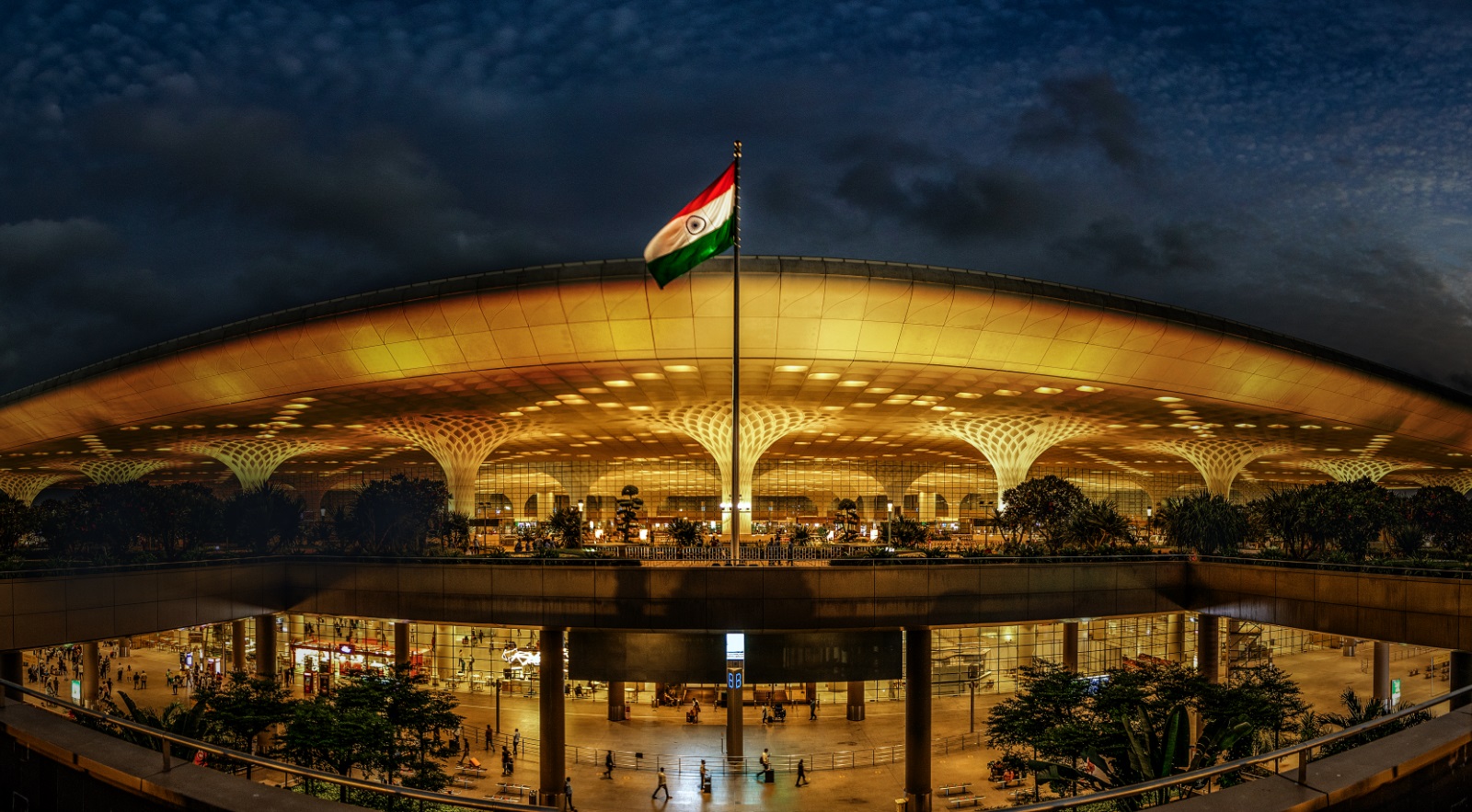Chennai airport could soon become the hub for dismantling and repairing aircraft
Radhika Bansal
10 May 2022

Chennai could soon become the hub for dismantling aircraft as parts harvested in the city from abandoned aircraft are being sold to refurbish other aircraft around the world.
"The market is huge," said Pandian Sokku, managing director of Chennai-based maintenance, repair, and operations (MRO) company Nano Aviation India Pvt Limited.
Being the first in India to dismantle a Boeing 777 plane by the Jet Airways, his company is now flooded with calls to dismantle aircraft from across the country. "I have dismantled seven aircraft in Chennai and getting more orders," he said.
Being the first in India to dismantle a Boeing 777 plane by the Jet Airways
Used Serviceable Materials (USMs), which are taken out of abandoned aircraft and are installed in active commercial aircraft, are experiencing a high demand worldwide owing to their ability to lower the maintenance cost.
Notably, several MRO providers around the world are extensively using USMs owing to a rising number of ageing aircraft. As such, a majority of aircraft spares in the market are recycled ones.
They are sold after getting a certification from the authorities concerned. Many airlines use it, Pandian said.
Several MRO providers around the world are extensively using USMs owing to a rising number of ageing aircraft.
Earlier in India, spare parts of leased aircraft could not be imported or exported. Now, however, RBI has changed Foreign Exchange Management Act framework to allow Indian players to export leased aircraft, helicopters, and engines, either fully or knocked down.
ALSO READ - 8 airports identified by AAI for promoting Aircraft Maintenance, Repair and Overhaul activities
Chennai Airport Director Dr Sharad Kumar said there are two categories of aircraft — one that is turned into scrap due to its being grounded for a long and the other, recoverable. Recently, the Airport Authority of India auctioned four F-27 aircraft of the erstwhile NEPC Airlines. Scrap dealers bought these planes.
A B-777-300 ER, grounded by the erstwhile Jet Airways for over a year and belonging to the second category, however, was dismantled by Nano Aviation. There were also seven ATR 72-500 aircraft of the King Fisher Airlines, grounded in 2012.
Airport Authority of India auctioned four F-27 aircraft of the erstwhile NEPC Airlines. Scrap dealers bought these planes.
Three of them have been attached by the excise department for non-payment of taxes. Of the four aircraft, two have been purchased by Nano Aviation, said, Dr Kumar.
The dismantling of the Jet Airways plane took three months and provided jobs to 100 people, piquing the government's interest. "It also generated huge revenue and foreign exchange. As such, the government is looking to develop this sector similar to how it did with the Alang Ship Breaking Yard in Gujarat," said Pandian.
On Chennai's suitability for the sector, he said having a port nearby makes transportation easier. "I can't do it in Hyderabad or Bengaluru as I have to transport the spares by road to the port. In Chennai, the port hardly takes two to three hours away. About 90% of aircraft spares export is done via the sea," he said.
The MRO will be set up over 3,000sqm by the side of the secondary runway.
The Airports Authority of India has begun the paperwork to build a maintenance, repair and overhaul (MRO) facility near the second runway to encourage airlines to maintain their planes and turn Chennai airport into a hub.
The plan was suggested as part of the airport expansion project, which includes adding more facilities like the MRO, a fuel farm and more parking bays to equip the airport to handle passenger and aircraft traffic in the coming years as plans for a second airport are progressing slowly.
The MRO will be set up over 3,000sqm by the side of the secondary runway. The land has been earmarked near a set of parking bays and hangars. A tender has been floated to identify a contractor who will build and operate the facility for 30 years.
Aircraft and their parts can be stored, scrapped and recycled.
Firms interested in bidding will be visiting the airport in the coming weeks. The project is to be completed in a year. Sources said the MRO’s hangar will come up in front of a set of remote parking bays where planes can be parked. An airline hangar is also nearby.
Airliners are typically operated for 20 to 30 years. Corrosion, metal fatigue, and low availability of new spare parts are problems encountered in greater frequency the older a machine becomes.
Eventually, these factors, alongside improvements in fuel efficiency and reduction in maintenance cost of newer machines, reduce the economic viability of the operation of older airliners. Consequently, they may be stored, or scrapped and recycled.
Read next
Say hello to "VIBHRAM" - an indigenous UAV helicopter built for the army
Prashant-prabhakar
10 May 2022

Boosting the quest for "Atmanirbhar Bharat" - which aims at reducing foreign dependency in defence and aero technology further, a North Tech Symposium was held at Udhampur, Jammu - which showcased a variety of innovations in technological advancements.
Webdunia
Amongst various tech that was on display, "VIBHRAM"- a High-Efficiency Dissimilar Coaxial Helicopter, designed by a team of postgraduate students from the Aerospace Engineering Department of IIT Kanpur, was showcased as well.
A brief history
Back in August of 2017, 'Vibhram' won the third prize in the 34th Annual Student Design Competition organised by the American Helicopter Society.
Four years hence, the design was shown to the late Chief of Defence Staff, General Bipin Rawat on the occasion of Army Technology Day, on January 8, 2021. It was then shortlisted and displayed on Jan 15th on Army day for the Honorable Prime Minister of India in New Delhi.
Tech and specs
Designed to accomplish a variety of tasks, "VIBHRAM" is a high-endurance multi-role gasoline-powered Unmanned Aerial Vehicle.
Asianet Newsable
With a maximum hovering endurance of two hours, it features a day and night camera payload that can be useful for purposes like surveillance, chemical, biological, radiological, nuclear and high yield explosives detection, crowd monitoring, pipeline inspection, and forest fire detection among others.
It is capable of carrying four kilograms of payload at sea level at a speed of 70 km/h for long-range payload delivery and surveillance from a long standoff distance.
Installed with a fully functional and robust autopilot system, it additionally features multiple redundant fail-safe measures, which makes it a reliable tool in critical applications.
Apparently, this design has resulted in a new configuration for helicopters which is predicted to consume 5% to 20% less power than any existing helicopter concept in the world.
The fact that it is said to be around 20 per cent more efficient than the existing motor design like the traditional single main rotor and tail rotor and touted to consume less fuel in comparison to traditional helicopters, makes it worthy to be used by the army and the Air Force.
https://www.youtube.com/watch?v=KMHGInFLtec
Team Vibhram from IIT Kanpur
The project, which was carried out under the guidance of Prof Venkatesan and Prof Abhishek, was headed by Karthik S, who is pursuing MTech while Rahul Ramanujam is the technical leader, (PhD). The team further comprises Ramdas (PhD), Diksha Aggarwal (MTech), Sakshi Gupta (MTech), Avinash Shet (MTech), Vishesh Kumar Singh (MTech), and Naba Kishore Routray (MTech), all postgraduate students from Aerospace Engineering Department of IIT Kanpur.
SOURCE(s)
COVER: palpalnewshub
Read next
The international aviation community has set a roadmap of achieving zero emissions, or at least half of what is being produced right now, by 2050. Various strides have been made to improvise current propulsion systems to make them more efficient and environment-friendly.
Illustrative | Investable Universe
Aviation stalwarts have already begun experimenting and testing the technological feasibility of various propulsion systems-hydrogen, electric and ion propulsion to name a few. Current regulations now allow airlines to fly on 50% SAF and it will just be a matter of time before we start flying on 100% SAF.
ADS Group
Aviation H2, an Australian-based company, envisions minimizing the leaning of commercial aircraft towards standard Jet-A jet fuel, by burning green ammonia instead.
New Atlas
Wait, what? Yes, you heard that right.
The second-most produced chemical in the world today, ammonia is touted to be a promising source of energy carrier and source of future fuel, with interesting potential for decarbonizing aviation, rail and shipping alike. Although primarily used as a fertilizer, it is touted to move and store green hydrogen more effectively once the clean energy revolution kicks in.
Clean, renewable energy is produced at a point which is often miles away from where the demand is and hence, transportation becomes the catch. If that clean energy is used to electrolyze water and produce hydrogen, it can be stored and transported. Or better yet, that hydrogen can also be mixed with atmospheric nitrogen to produce ammonia, which travels much better than either gaseous or cryogenic liquid H2.
Hydrogen gas is very light for the energy it holds, and liquid hydrogen is even lighter. But the tanks are big and heavy. We certainly don't discount liquid hydrogen or any other form of hydrogen as an option. We're not shutting those down. We're just going with ammonia for now. It's the simplest conversion, and that intrinsically will make it the most reliable, and that in itself makes it intrinsically the safestAviation H2 Director Christof Mayer
Helmut Mayer-brother of Christof Mayer(pictured above) | New Atlas
How is it any better and cheaper than a hydrogen fuel cell conversion?
Mayer states that with a few modifications, a regular jet engine can be converted to run on ammonia, eliminating all its carbon dioxide emissions in a way that doesn't throw the baby out with the bathwater as opposed to a hydrogen fuel cell propulsion system which would require the turbofan engines to be replaced by electric motors as well as gutting the fuel storage systems and putting in something radically different.
Aviation H2
We need to modify the fuel storage system into something that's basically similar to an LPG tank. So it's the fuel storage, the engine control, and the engine, those are the big ticket items that we need to develop. But we're not really changing the design of the engine much at all physicallysays Mayer
Illustrative | New Atlas
However, with all being said, there's still an inevitable catch. As the hydrogen in ammonia is broken off during combustion, it joins with atmospheric oxygen to form water, while a percentage of the nitrogen also gets oxidized in the flame, causing environmentally harmful nitrous oxides.
Yes, it gives off nitrous oxides. But we can control those by special processes. We don't just squirt the ammonia in there and burn, there's certain things we have to do to it, and there's certain controls we have to put in place inside the fuel control systemSays Mayer
Starting, the company plans to get a small regional nine-seat jet built and flight tested. It has, apparently, signed an agreement with charter operator FalconAir, giving Aviation H2 access to FalconAir's hangars, facilities and operating licenses. The aircraft is expected to do hour-long flights, with the same engine thrust and performance characteristics as it would get on Jet-A.
As a part of the "proof of concept" flight, the company plans to get the aircraft in the skies with at least one engine running on ammonia, by mid-2023, which, could be a first for jet-powered aviation.
Eventually, Aviation H2 hopes to begin retrofitting existing planes as a transitional step for carriers looking to decarbonize, taking advantage of the fact that the rest of the aircraft is already fully certified to bring down compliance costs.
SOURCE(s)
COVER: NBAA
Read next
Tata Projects shortlisted to build various airside and landside facilities at Noida Airport
Radhika Bansal
09 May 2022
Tata Projects has been shortlisted to construct the terminal, runway, and various other airside and landside facilities at the Noida International Airport in Jewar.
The infrastructure and construction arm of Tata group is said to have scored higher than rival bidders – Larsen & Toubro and Shapoorji Pallonji group under the quality and cost-based selection criteria that are being followed for the selection of the contractor.
ALSO READ - Work on Noida International Airport’s runway, terminal building and ATC to begin in May
Tata Projects shortlisted to build various airside and landside facilities at Noida Airport
Currently, negotiations are underway between the shortlisted bidder and Noida International Airport (NIA) and the contract award could take place after two to three weeks, a source said.
“We are still in the process of selecting an EPC contractor for the development of Noida International Airport. We will share information on the contractor once a final decision has been taken,” NIA said in a statement.
In April 2021, Noida airport invited bids for engineering, procurement, and construction of the terminal, runway, and various other works.
Tata Projects is executing critical road, rail, and metro projects in the country. It has also been selected for the construction of the new parliament building in Delhi.
In November 2021, Prime Minister Narendra Modi laid the foundation stone of Jewar.
But its experience in airport construction space is limited. In 2018 it won the contract for the construction of a new terminal building at Prayagraj airport in Uttar Pradesh and is credited for completing the project in a record 11 months.
ALSO RAED - PM Modi lays the foundation of Noida International Airport
In November 2021, Prime Minister Narendra Modi laid the foundation stone of Jewar. Spread over 1334 hectares the airport will have a single runway in phase I and will be capable of handling twelve million passengers annually. The airport is expected to get operational by 2024.
The project is being developed as a public-private partnership between Zurich Airport and Uttar Pradesh government. Zurich Airport is investing INR 5,700 crore for phase I and has tied up around INR 3,725 crore in debt from the State Bank of India for the project.
In April 2021, Noida airport invited bids for engineering, procurement, and construction of the terminal, runway, and various other works.
The airport will be strategically located at about 72 km from Indira Gandhi International Airport, Delhi; about 52 km from Noida, about 130 km from Agra and about 90 km from Multi-Modal Logistics Hub at Dadri.
ALSO READ - UP government to purchase extra 7.9 hectares of land for Noida Airport
YIAPL commenced the groundwork on the airport soon after Prime Minister Narendra Modi laid the foundation stone for this project in Nov 2021. YIAPL has so far completed the construction of 9km of the 17km-long boundary wall around 1,334 hectares of land on which the greenfield is being developed. The ground has also been completely levelled.
Read next
Passengers flying out of Mumbai Airport will continue paying the development fees (DF) till June 30, 2022. The Airports Economic Regulatory Authority (AERA) has extended the levy of INR 120 and INR 720 per departing domestic and international passenger, respectively, from March 31, 2022, to June end as an interim measure.
The regulator has also directed the Airports Authority of India (AAI) to "examine all issues being raised by Mumbai International Airport Ltd (MIAL)” on this subject by May 15.
AERA had in December 2012 sanctioned charging a DF of INR 100 and INR 600 per departing domestic and international passenger, respectively, till April 30, 2021, to finance a deficit of INR 3,845 crore in Chhatrapati Shivaji Maharaj International Airport (CSMIA) capacity enhancement project.
Mumbai Airport to levy development fees on flyers till June end
Subsequently, in January 2016, it allowed a levy of INR 20 and INR 120 per departing domestic and international passenger, respectively, till March 31, 2021, to finance metro works at the airport worth INR 518 crore.
These two levies were merged to become INR 120 and INR 720 per departing domestic and international passenger. When Covid hit airport footfalls severely and collection suffered badly, AERA had on MIAL’s request extended these two levies till March 31, 2022.
AAI had this March told AERA that “DF to be billed as on September 30, 2021, is INR 401.9 crore. However, as per MIAL, DF billable (on that date) is INR 1459 crore. Further (AAI informed) MDF (metro DF) to be billed by MIAL as of September 30, 2021, is INR 89.6 crore.
“A further request was received from MIAL for extension of the period of levy… due to shortfall in the collection… beyond March 31, 2022, on an interim basis. A letter was sent to AAI on January 25, 2022, for (its) comments regarding year-wise DF collected from passengers, amount disbursed to MIAL, interest payment, details of utilisation…MIAL had claimed outstanding MDF as of September 30, 2021, as INR 106.8 crore. In addition, AAI has pointed out certain issues of importance in the DF and MDF audit reports and MIAL’s claim, which needs to be sorted out."AERA order dated March 28, 2022
“In view of paucity of time for resolving the issues and reconciliation of figures,” the order says “there is a necessity to extend the levy of DF beyond March 2022, to recover the sanctioned DF amount.
Accordingly, it is decided to extend the levy of DF up to June 30, 2022. In the meantime, the position will be examined and further action/Order will be issued based on such examination.”
AERA has directed AAI to examine all issues raised by MIAL by May 15 and also asked the airport operator to “provide all required documents to AAI in this regard.”
Read next
The Union Home Ministry has granted security clearance to Jet Airways which is planning to relaunch commercial flight operations in the next few months, according to an official document. The letter was also sent to aviation safety regulator DGCA and aviation security regulator BCAS.
The Jalan-Kalrock Consortium is currently the promoter of Jet Airways. The airline in its old avatar was owned by Naresh Goyal and had operated its last flight on April 17, 2019.
ALSO READ - Jet Airways conducts test flight after more than 3 years
Last Thursday, May 5, the airline conducted its test flight to and from the Hyderabad airport in a step towards obtaining the air operator certificate.
Jet Airways 2.0 gets security clearance from Home Ministry
A letter sent by the civil aviation ministry to the airline on May 6 informed it about the grant of the security clearance by the Union home ministry.
The letter said, it is "directed to refer to your application… to convey security clearance for change in shareholding pattern of the company/firm, for scheduled operator permit, based on security clearance received from the Ministry of Home Affairs".
"The security clearance can, however, be withdrawn any time in the light of any adverse inputs, if so received from the Ministry of Home Affairs in future," it added.
On May 5, the airline conducted its test flight to and from the Hyderabad airport in a step towards obtaining the air operator certificate.
Last Thursday's test flight was conducted to prove to aviation regulator DGCA that the aircraft and its components are operating normally.
ALSO READ - Jet Airways returning with a hybrid premium and no-frills model, first flight likely by October 2022
After the test flight, the airline has to conduct proving flights after which the Directorate General of Civil Aviation (DGCA) will grant the air operator certificate. Proving flights are similar to commercial flights with DGCA officials and airline officials as passengers and cabin crew members on board.
ALSO READ - Sanjiv Kapoor named as the CEO of Jet Airways
Jet Airways’ flying licence or AOP was made dormant, months after it stopped flying.
Last month, the airline appointed industry veteran Sanjiv Kapoor, former chief strategy and commercial officer at Vistara, as its CEO.
Jet Airways already has more than 150 employees on its rolls and the airline is also speaking to vendors, including lessors, for the relaunch.
Jet Airways stopped operating in April 2019, burdened under piling losses, debt and dues. Jet Airways’ flying licence or AOP was made dormant, months after it stopped flying.




Comment